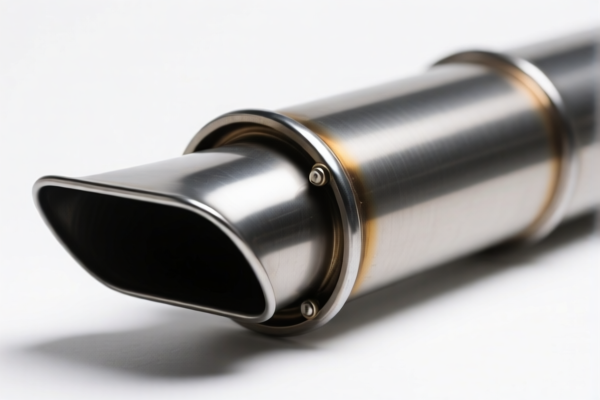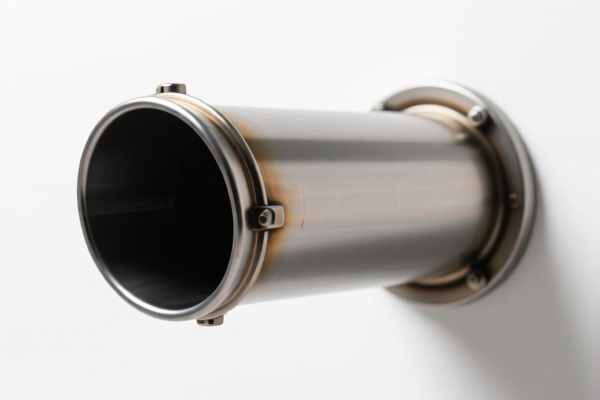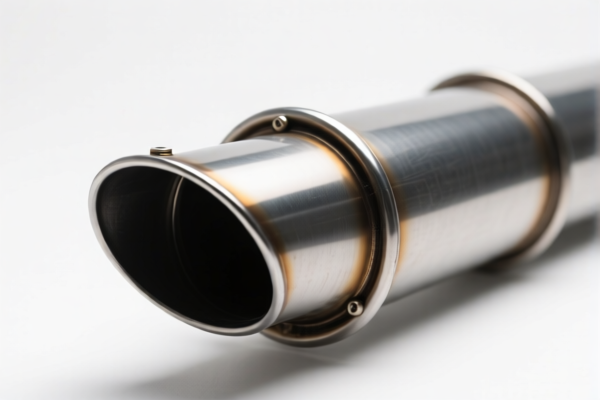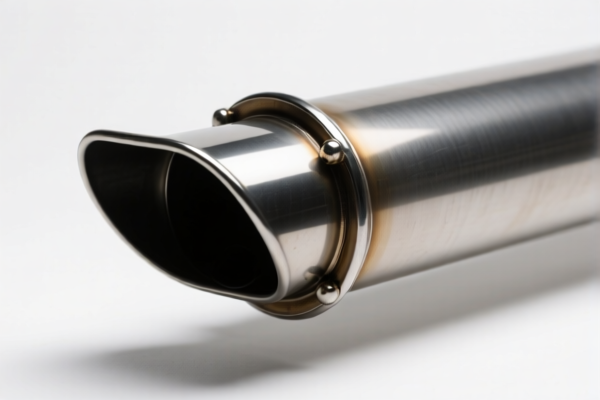| HS Code | Official Doc | Tariff Rate | Origin | Destination | Effective Date |
|---|---|---|---|---|---|
| 8409919990 | Doc | 57.5% | CN | US | 2025-05-12 |
| 8409999990 | Doc | 55.0% | CN | US | 2025-05-12 |
| 8708921000 | Doc | 55.0% | CN | US | 2025-05-12 |
| 8708925000 | Doc | 57.5% | CN | US | 2025-05-12 |
| 8714998000 | Doc | 47.5% | CN | US | 2025-05-12 |
| 7326908688 | Doc | 82.9% | CN | US | 2025-05-12 |
| 7326908605 | Doc | 82.9% | CN | US | 2025-05-12 |
| 7325995000 | Doc | 82.9% | CN | US | 2025-05-12 |
| 7325991000 | Doc | 80.0% | CN | US | 2025-05-12 |




Exhaust Silencer
An exhaust silencer, also known as a muffler, is a device designed to reduce the noise emitted from the exhaust system of an internal combustion engine. It is a crucial component in vehicles and other machinery to comply with noise regulations and improve user comfort.
Material
Exhaust silencers are typically constructed from the following materials:
- Steel: Common carbon steel is widely used due to its affordability and strength. Aluminized steel offers improved corrosion resistance.
- Stainless Steel: Provides superior corrosion resistance and durability, often used in performance and higher-end applications. Grades like 304 and 409 stainless steel are frequently employed.
- Aluminum: Lighter than steel, aluminum is used in some performance applications, though it is less durable and more susceptible to damage.
- Titanium: A premium material offering exceptional strength-to-weight ratio and corrosion resistance, used in high-performance and racing applications.
Purpose
The primary purpose of an exhaust silencer is noise reduction. Internal combustion engines generate significant noise from the rapid expulsion of exhaust gases. The silencer attenuates this noise through various mechanisms. Secondary purposes include:
- Backpressure Control: Silencer design influences exhaust backpressure, which can affect engine performance.
- Emissions Control: Some silencers incorporate catalytic converters or resonators to aid in emissions reduction.
Function
Exencers work by utilizing principles of acoustics to reduce noise levels:
- Absorption: Perforated tubes within the silencer are surrounded by sound-absorbing materials (e.g., fiberglass packing, steel wool) that dampen sound waves.
- Reflection: Chambers and baffles within the silencer cause sound waves to reflect and interfere with each other, canceling out certain frequencies.
- Diffusion: Complex internal structures diffuse sound waves, spreading them out and reducing their intensity.
- Helmholtz Resonance: Certain silencer designs utilize Helmholtz resonators (chambers with restricted openings) to target and cancel out specific exhaust frequencies.
Usage Scenarios
Exhaust silencers are found in a wide range of applications:
- Automobiles: Standard equipment on all gasoline and diesel-powered cars and trucks.
- Motorcycles: Essential for noise compliance and rider comfort.
- Heavy Machinery: Used on construction equipment, generators, and industrial engines.
- Marine Engines: Reduces noise pollution from boats and ships.
- Small Engines: Found on lawnmowers, chainsaws, and other power tools.
Common Types
- Absorption Silencers: Utilize sound-absorbing materials extensively. Effective at reducing noise across a broad frequency range, but can degrade over time as the packing material breaks down.
- Reflection Silencers: Employ chambers and baffles to reflect sound waves. More durable than absorption silencers, but may be less effective at reducing low-frequency noise.
- Chambered Silencers: A common type using a series of chambers to reflect and cancel sound waves.
- Straight-Through Silencers: Feature a perforated core with minimal restriction to exhaust flow. Often used in performance applications.
- Resonator Silencers: Incorporate resonators to target and cancel specific exhaust frequencies.
- Turbo Silencers: Designed for use with turbocharged engines, accounting for the increased exhaust velocity and pressure.
- Universal Silencers: Designed to be adaptable to a variety of vehicles and applications.
Exhaust silencers are components designed to reduce the noise emitted from internal combustion engines. Their classification depends on the vehicle type they are used with and their material composition.
Here are relevant HS codes based on the provided information:
- 8708.92.10.00: Parts and accessories of motor vehicles (headings 8701 to 8705); Other parts and accessories; Mufflers and exhaust pipes; parts thereof; Mufflers and exhaust pipes; For tractors suitable for agricultural use. This code specifically covers mufflers and exhaust pipes intended for tractors used in agriculture. The first two digits (87) indicate motor vehicles, the next two (08) specify parts and accessories, and the final digits detail mufflers and exhaust pipes for agricultural tractors.
- 8708.92.50.00: Parts and accessories of motor vehicles (headings 8701 to 8705); Other parts and accessories; Mufflers and exhaust pipes; parts thereof; Mufflers and exhaust pipes; For other vehicles. This code applies to mufflers and exhaust pipes for vehicles other than agricultural tractors. Similar to the previous code, 87 indicates motor vehicles, 08 denotes parts and accessories, and the final digits specify mufflers and exhaust pipes for other vehicle types.
- 7326.90.86.88: Other articles of iron or steel; Other; Other; Other; Other. This code could apply if the silencer is made of iron or steel and doesn't fall under a more specific classification. The first two digits (73) indicate iron or steel articles, 26 denotes other articles, and the final digits specify other iron or steel articles.
- 7326.90.86.05: Other articles of iron or steel; Other; Other; Other; Rods for electrical grounding (potentially if the silencer uses rods as part of its construction, though this is a stretch). This code is applicable if the silencer incorporates rods for electrical grounding.
- 7325.99.50.00: Other cast articles of iron or steel; Other; Other; Other. This code could be relevant if the silencer is a cast iron or steel component.
- 7325.99.10.00: Other cast articles of iron or steel; Other; Other; Of cast iron. This code applies specifically to cast iron silencers.
Important Note: Regarding HS codes 7326.90.86.88, 7326.90.86.05, 7325.99.50.00 and 7325.99.10.00, please note that these codes apply if the silencer is made of iron or steel. For HS codes 7326.90.86.88, 7326.90.86.05, 7325.99.50.00 and 7325.99.10.00, a 25%加征关税 applies to steel and aluminum products.
Customer Reviews
No reviews yet.